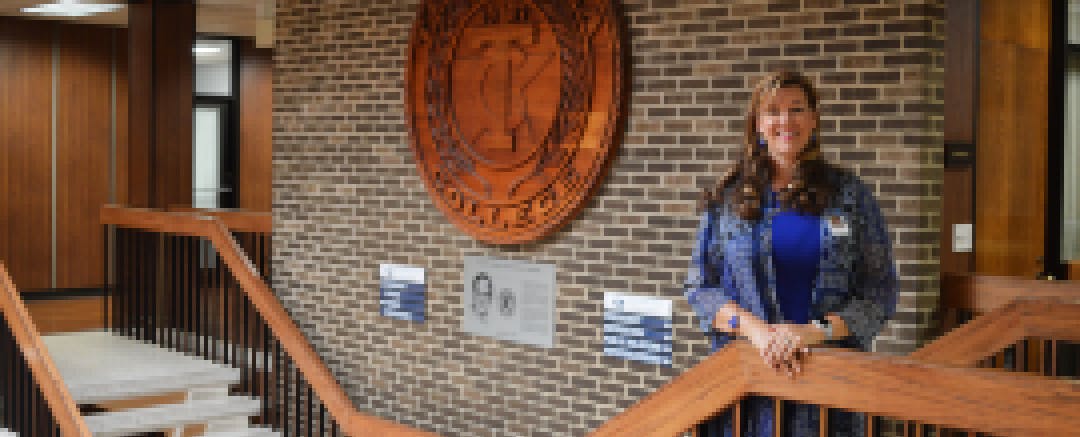This is the second part of a three-part series looking at how one college in Texas staged a turnaround. Read part one first, then check out the finale.
TEXARKANA, Texas — “Hope” was a popular word during the 2012 election season. And the tagline managed to trickle into a conservative corner of east Texas as well; not because of Barack Obama campaign posters or national politics, but around a local ballot initiative that would increase the nearby community college’s taxing district—and help provide sustainable funds that the school needed in order to continue operating in the long-run.
The tax annexation passed that year, giving the school a more secure financial footing. But a money crisis wasn’t the only challenge Texarkana College was facing in 2012. Students were struggling, and many were not finishing.
That year, the overall graduation rate for first-time, full-time students at Texarkana College was 12 percent, according to data from the National Center for Education Statistics. For black students, that number was 7 percent. And only 8 percent of students transferred out to another college or university.
“Faculty were still teaching to that student of the ‘90s,” says Donna McDaniel, vice president of instruction at Texarkana College. “You know, that strong student [who] didn't have any problems and they just came to Texarkana College and then transferred out.”
Today the average student at the campus has changed, she says. More of them work, support children or struggle with other issues.

Since 2012, Texarkana College has made some major changes, including a full re-design of the its developmental education to reduce the number of non-credit courses that students were taking and paying for.
“[Students] were consuming much of their financial aid towards those developmental-education courses and taking so much time and often completely giving up hope on ever getting a degree,” says Jamie Ashby, director of institutional research and effectiveness at the college. The old system was also hurting students eligible for financial aid, says Texarkana College President James Henry Russell, because the previously paper process made it difficult to keep track of students, and many fell through the cracks.
The college switched to a co-requisite model, meaning students take supplemental math and English courses alongside college-level ones. It reduced its developmental course offerings to only one required reading course that is paired with the college-level course, and two self-paced math pathways that use adaptive-learning technology along with guided instruction from a faculty member in the classroom.
There were physical changes, too. The college re-purposed it’s library to include a new “academic commons” area that centralizes student support services such as a math lab, professional tutoring, a testing center and, of course, a coffee bar.
Some officials say over-spending on technology was what propelled Texarkana College into its financial troubles in the first place. And part of the college’s redesign effort was to find a way out of that.
Texarkana College previously used Banner, an enterprise system sold by Ellucian. Vice President of Information Technology Michael Dumdei says the college first tried to renegotiate its contract with Ellucian, and that it went from $2 million per year to around $1.3 million annually. But, “it was still more than we could afford in our situation,” Dumdei says.
After the contract with Ellucian ran up, the college replaced Banner with Jenzabar for its new enterprise records system, and McDaniel says the switch has saved the school “a million dollars a year.”
Dumdei explains that the bulk of those savings has come from the college’s decision to take over its own IT services, rather than paying for those through the vendor. (Ali Robinson, director of media relations at Ellucian, wrote in an email that the company is “unable to publicly comment on specific customer contracts.”)
Texarkana now uses student records data to stay apprised of when students are struggling. Attendance is the main data point they focus on: If a student misses a class, the system notifies a faculty advisor, who reaches out to the student. Students at the college also now have access to a tool called “Connect,” which shows them their degree pathway and progression towards graduation.
Perhaps the biggest adjustment was the introduction of faculty advisors, which McDaniel describes as “a key change in our whole culture.”
Each student at Texarkana College takes a special course their first year where they are assigned a faculty advisor, who is a volunteer. The model was born out of necessity: students needed more hands-on support for challenges with academics and for balancing their studies with the rest of their lives. But the college couldn't easily afford to hire a new team of advisors.
The ratio of students to advisors has gone from 450:1 to 28:1, according to McDaniel. But the move has also been part of a larger effort to bring back a sense of pride among faculty.
“I think the college went through a period of time where everybody got very complacent and not really happy with who the college was and who our student body was,” says Russell. “It was a big shift in the culture to really understand who our students are and to realize that if we work hard enough, our students can be extremely successful.”
The first year that Russell began asking faculty to step up as advisors, 15 raised their hand. Today, McDaniel says that number is closer to 80.
The changes to advising and academics have made a difference. The graduation rate for first-time, full-time students at Texarkana College went from 9 to 31 percent from 2008 to 2016. Graduation rates among black students rose from 5 to 22 percent during that time period.
At 36.5 percent, the four-year graduation rate for full-time students at Texarkana College in 2017 was among the highest in Texas for community colleges, according to the Texas Public Higher Education Almanac.
These efforts have not gone unnoticed. The college worked with the national higher education nonprofit Achieving the Dream while designing and implementing its new services, and in 2018 was awarded the organization’s top honor, the Leah Meyer Austin Award, which “recognizes institutions that have demonstrated outstanding progress in designing a student-focused culture and aligning institutional strategies to promote student success.” The school received a $25,000 prize along with the recognition.
“The culture that was established through this whole transition that we went through, and the fact that we almost shut down—our faculty grew willing to go above and beyond,” says McDaniel. “They step up and say, yes, we'll do it.”
Texarkana College has made progress. But the school still faces major challenges in student completion and discrepancies among which groups of students are improving the most.
Read part one for more background on Texarkana College's transformation. Then read what’s to come, and what students have to say, in the final installment of this series.


